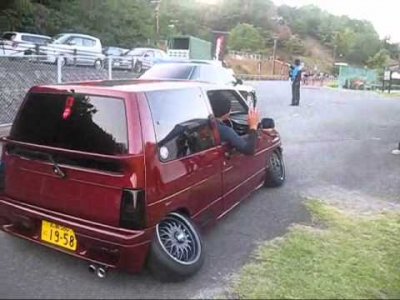My son's 73 Roadrunner (340, 727, A/C) has been aligned several times in the past few years, by a couple of different shops. It rides on 6 1/2" wide rally wheels with 235/60R15 radial tires.
In all cases, the ^%$#! thing eats tires. :angryfire: It seems that it has too much positive camber, since both front tires get severely worn on the outer edge. The inner part of the tread is like new.
The major suspension bushings/parts were replaced with Moog parts less than 12,000 miles ago (when it was restored), but I don't remember exactly when. I did not do this work, and I am not familiar with the 73 alignment method, although it seems there is an eccentric in the upper control arm to adjust camber?
Rather than just go get it aligned again, I want to try an fix this issue before it gets aligned again. Could the problem be the non-stock radial tires vs. stock alignment specs? Is something in the alignment cams prone to slipping?
Any help to point me in the right direction would be greatly appreciated!
Thanks in advance,
Hawk
In all cases, the ^%$#! thing eats tires. :angryfire: It seems that it has too much positive camber, since both front tires get severely worn on the outer edge. The inner part of the tread is like new.
The major suspension bushings/parts were replaced with Moog parts less than 12,000 miles ago (when it was restored), but I don't remember exactly when. I did not do this work, and I am not familiar with the 73 alignment method, although it seems there is an eccentric in the upper control arm to adjust camber?
Rather than just go get it aligned again, I want to try an fix this issue before it gets aligned again. Could the problem be the non-stock radial tires vs. stock alignment specs? Is something in the alignment cams prone to slipping?
Any help to point me in the right direction would be greatly appreciated!
Thanks in advance,
Hawk

















